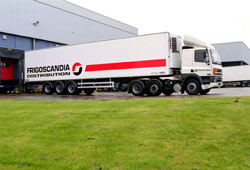|
Software Solutions Limited |

|
 |

|

|
|
|
|
With an ever increasing focus on reducing costs, you cannot afford to be the one link in the supply chain that does not control equipment balances. If you rely on everyone else to tell you what you owe, it will only be a matter of time before your physical stocks of equipment fall short of what you are asked to return. Bearing this in mind, the equipment control system can easily pay for itself, as not only does it help to prevent the loss of equipment, it also provides you with evidence to refute unwarranted claims for lost pallets from other organisations. Our experience in this field is second to none, with the first installation going live as early as 1993. The equipment control system can be supplied and operated as a stand-alone package if so required. Deliveries, returns, opening balances and transfers can be entered manually and balances owed will be updated. But a major benefit of the SWIFT equipment control package comes when it is integrated with the Transport Management system. All collection and delivery orders processed through the TMS will automatically generate equipment control transactions, removing the need to enter the majority of transactions manually. This will not only save operator keying time but also reduce the chance of data input errors. Whether integrated or stand-alone, SWIFT equipment control allows you to maintain balances owed to you and what you owe other parties. These party balances are categorised into customers, hauliers/subcontractors, collection/delivery points and your own depots pallet pool. At a more detailed level, any balance owed or owing can be justified by means of a transaction history audit trail showing details of dates and times of all movements making up the balance. This traceability can prove invaluable in refuting over-inflated claims and so avoid getting billed for equipment you do not owe. Included within the standard equipment control system are all the facilities required to fully manage Chep pallets. Whether you are a Chep account holder in your own right or you are asked to control Chep pallet accounts on behalf of your customers, SWIFT provides all the facilities you need. Issues from Chep depots Returns to Chep depots Transfers between Chep Account holders Dehires to/from your account Auto Dehires Chep Bank facilities PCV processing PQN processing In addition to the above facilities, periodic Chep audit trails can be produced detailing all the relevant Chep balance movements for your own or a customers account. These audit trails detail day-by-day balances and pallet hire rates and so can be used to reconcile Chep invoices. Standard reporting options allow you to easily list all your customers, subcontractors and address balances. A transaction diary provides an on-screen enquiry facility to enable you to answer queries about particular movements. Other standard reporting options provide information on 1-4-1 exchanges, PCV usage and recovery analysis, customer dehire statistics and despatch/average balance ratios.
No part of this website may be reproduced without permission |